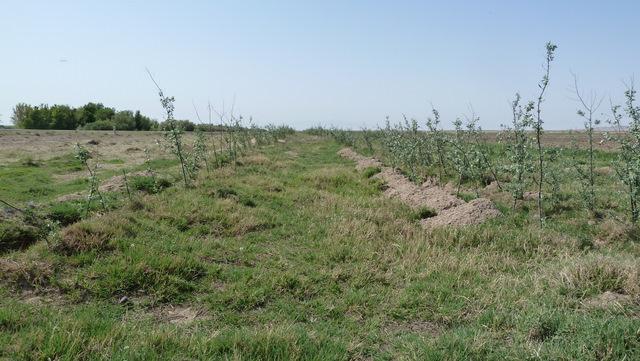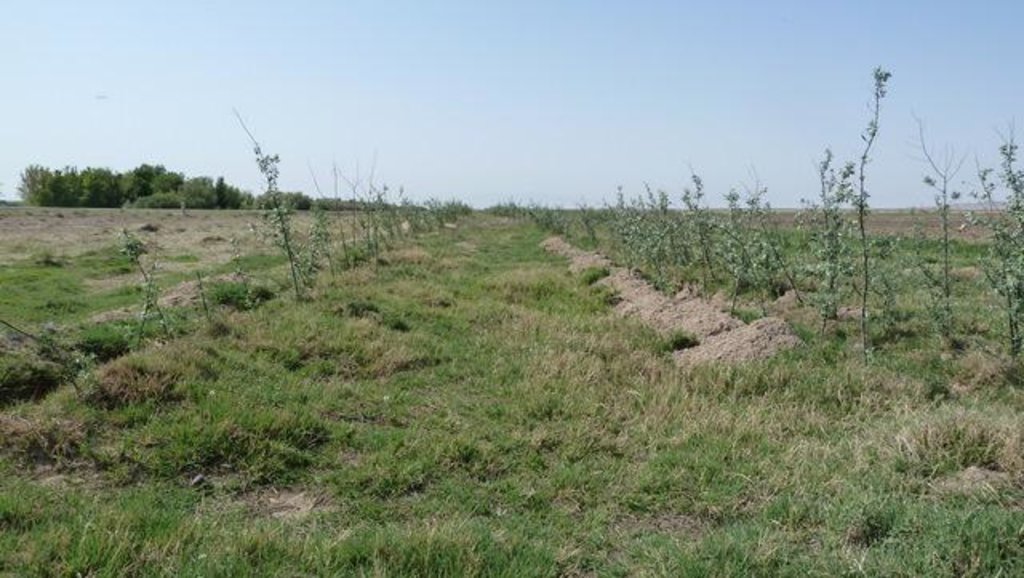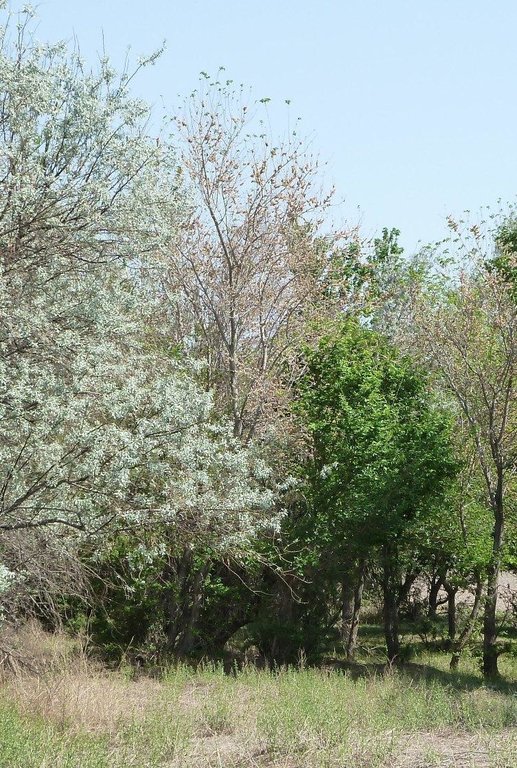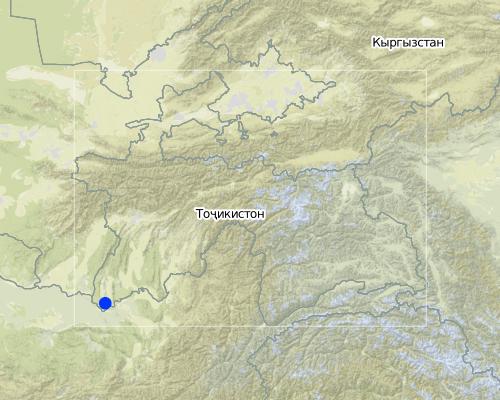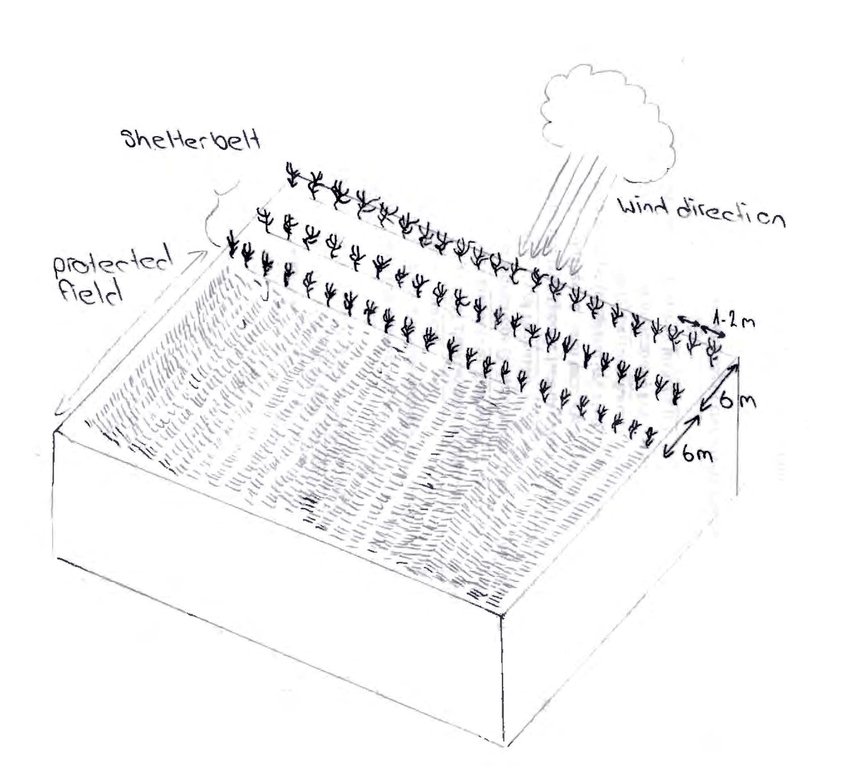Защитная полоса из российской дикой маслины для защиты орошаемых полей [Таджикистан]
- Создание:
- Обновить:
- Составитель: Firdavs Faizulloev
- Редактор: –
- Рецензент: Deborah Niggli
Таджикистан - Инициатива Стран Центральной Азии по Управлению Земельными Ресурсами (CACILM/ИСЦАУЗР)
technologies_1458 - Таджикистан
- Полная аннотация в формате PDF
- Полная аннотация в формате PDF для вывода на печать
- Полная аннотация в формате интернет-страницы
- Полная аннотация (неотформатированно)
- Защитная полоса из российской дикой маслины для защиты орошаемых полей: 4 января 2017 г. (inactive)
- Защитная полоса из российской дикой маслины для защиты орошаемых полей: 20 июля 2017 г. (inactive)
- Защитная полоса из российской дикой маслины для защиты орошаемых полей: 21 августа 2019 г. (inactive)
- Защитная полоса из российской дикой маслины для защиты орошаемых полей: 2 ноября 2021 г. (public)
Просмотреть разделы
Развернуть все Свернуть все1. Общая информация
1.2 Контактные данные специалистов и организаций, участвующих в описании и оценке Технологии
Специалист по УЗП:
Специалист по УЗП:
Ibragimov Firuz
(+992 44) 600 55 19
firuz.ibragimov@undp.org
National Capacity Building Coordinator, Energy and Environment Programme, UNDP Tajikistan
Таджикистан
Название проекта, содействовавшего документированию/оценке Технологии (если применимо)
Central Asian Countries Initiative for Land Management (CACILM I)Название проекта, содействовавшего документированию/оценке Технологии (если применимо)
Pilot Program for Climate Resilience, Tajikistan (WB / PPCR)1.3 Условия, регламентирующие использование данных, собранных ВОКАТ
Когда были собраны данные (на местах)?
14/04/2011
Составитель и ответственный(-ые) специалист(-ы) согласны с условиями, регламентирующими использование собранных ВОКАТ данных:
Да
1.4 Декларация по устойчивости описываемой Технологии
Вызывает ли описанная здесь Технология проблемы деградации земель настолько, что ее нельзя назвать природосберегающей?
Нет
2. Описание Технологии УЗП
2.1 Краткое описание Технологии
Определение Технологии:
Защитные полосы используются для защиты орошаемых земель от песчаных образований и снижения скорости ветра
2.2 Подробное описание Технологии
Описание:
Данная технология включает в себя защитную полосу из российской дикой маслины (Elaeagnus angustifolia) для защиты орошаемой пшеницы и риса от сильных ветров.
В Шаартузском районе ветровая эрозия создает огромные проблемы при возделывании сельхозкультур, так как верхний слой почвы выветривается и откладывается в форме наносов на соседние поля. Песчаные бури повреждают не только сельхозкультуры, но и являются причиной больших проблем самого важного для сельского хозяйства поверхностного слоя – плодородного слоя почвы. Песок также повреждает оросительные каналы, дороги, сады и улицы в сельских районах, что заставляет население покидать данные районы. Если не обеспечить хорошую защиту поля, то и невозможно получить хороший урожай.
Решением данной проблемы стала посадка защитных полос вокруг полей для снижения скорости ветра и предотвращения эрозии пахотного слоя почвы. В Советское время защитные полосы высаживались в колхозах государственными лесхозами в соответствии с контрактом. После распада СССР и до создания дехканских хозяйств, землепользователи не были заинтересованы в инвестировании в создание защитных полос в связи с необеспеченными правами на землепользование и неясными юридическими процедурами. Тем не менее, один дехканин попробовал посадить защитную полосу в 1992 году, когда его сын вернулся с учебы в сельскохозяйственном институте, где изучил данную технологию. Они высадили первую защитную полосу с использованием различного вида деревьев для защиты новых орошаемых полей. В связи с финансовыми ограничениями, они не смогли посадить больше защитных полос, однако в 2010 ПРООН оказала им финансовую помощь для приобретения саженцев, чтобы увеличить площадь защитной полосы. Было установлено, что наилучшим видом для посадки для этой новой полосы является российская дикая маслина, так как только этот вид является устойчивым к сильно засоленным почвам, характерным для данной территории.
Деревья были посажены в три ряда вдоль границы поля и вдоль оросительных каналов. Промежуток между посаженными деревьями составлял 1м, а между рядами – 6м. Посадка деревьев проводилась «хашаром» (добровольная помощь соседей). 30 человек посадили около 10 000 деревьев в течение одного месяца. В течение первых трех лет после посадки, саженцы необходимо регулярно поливать и проводить санитарную обработку для того, чтобы помочь им закрепиться. После 6-7 лет, деревья смогут брать воду из почвы, что предотвратит орошаемые земли от ущерба, связанного с заболачиванием. Российская дикая маслина может за 10-12 лет вырастать до 12м.
Польза этих защитных полос заключается в увеличении урожайности (пшеница и рис) вследствие того, что полосы обеспечивают защиту от сильных ветров и снижают эвапотранспирацию. Благодаря этим видам растений, корни которых усваивают азот, улучшается бактериальное плодородие почвы. Далее деревья плодоносят пригодными в пищу фруктами и обеспечивают ценные дрова, которые потребляются домохозяйствами. Российская дикая маслина устойчива к вредителям и болезням, а также к засухе; однако требует большое количество воды в первые несколько лет для выращивания. Одной из проблем при создании защитных полос является само местное население, которое срубает ветки на дрова. В связи с этим дехканину необходимо обеспечивать, по возможности, охрану при помощи своей семьи и работников, которых он нанял для работы в поле. Реализация инициатив лесного хозяйства началась в 2009 году, и в период 2009-2010 гг. было охвачено около 11 га земли. 11 дехкан были вовлечены в проект, и создание защитных полос инициировалось шаг за шагом в течение этих двух лет. Инициатива проекта также продолжилась и в 2011. Так как другие дехкане увидели необходимость защитных полос, то в связи с этим появилась сильная тенденция по внедрению данной технологии другими дехканами.
2.3 Фотографии, иллюстрирующие Технологию
2.5 Страна/ регион/ места, где применяется Технология, информация о которых собрана в данной Анкете
Страна:
Таджикистан
Административная единица (Район/Область):
Халтон
Более точная привязка места:
Шартуз
Map
×2.6 Сколько лет применяется данная Технология
Если год начала применения Технологии достоверно неизвестен, дайте примерную оценку:
- 10-50 лет назад
2.7 Внедрение Технологии
Укажите, как именно Технология УЗП была внедрена:
- в качестве научного/ полевого эксперимента
Пояснения (тип проекта и т.д.):
Сын землепользователя узнал о технологии во время учебы в сельскохозяйственном университете и первая лесозащитная полоса была создана по собственной инициативе землепользователей
3. Классификация Технологии УЗП
3.1 Основные цели и задачи реализации Технологии
- повышение производства
- сохранение экосистем
3.2 Текущий(-ие) тип(-ы) землепользования на территории, где применяется Технология

Пахотные угодья и плантации
- Однолетние культуры
Пояснения:
Пыльные бури не только наносят урон сельскохозяйственным культурам, но также являются причиной урона, наносимого основному слою земной поверхности – плодородному слою почвы. Песок также наносит ущерб ирригационным каналам, дорогам, садам, улицам в городских районах, что может вынудить людей покинуть такие территории.
Ветровая эрозия ведет к выдуванию песчаных почв, низкому плодородию почвы, снижению растительного покрова и увеличению воздействия на изменение климата.
Если использование земель изменилось с началом применения Технологии, укажите тип землепользования до применения Технологии:
Other: Other: wastelands, deserts, glaciers, swamps, recreation areas, etc
3.3 Дополнительная информация о землепользовании
Обеспеченность водой участков, где реализуется Технология :
- полное орошение
Число урожаев за год:
- 1
3.4 Категория УЗП, к которой относится Технология
- Защитные лесные насаждения
3.5 Распределение Технологии по площади
Охарактеризуйте пространственное распространение Технологии :
- равномерно-однородное применение на определенной площади
Если Технология равномерно применяется на той или иной территории, укажите ее приблизительную общую площадь:
- < 0,1 км2 (10 га)
Пояснения:
Технология применена 11 различных фермерами еа 9 га земли
3.6 Мероприятия УЗП, выполняемые в рамках Технологии

Мероприятия с использованием растительности
- Р1: Древесный и кустарниковый покров
Пояснения:
Type of vegetative measures: урегулированный: -против ветра
3.7 Основные проблемы деградации земель, на решение которых направлена Технология

ветровая эрозия почв
- Эп: утрата плодородного слоя почвы
- Эд: дефляция и неравномерная аккумуляция
- Эд: косвенное влияние ветровой эрозии

биологическая деградация
- Бм: утрата местообитаний
- Бк: сокращение количества биомассы

деградация водных ресурсов
- Ва: почвенная засуха
Пояснения:
чрезмерное использование растительного покрова для бытовых целей, ветряные / пыльные бури, вводимый ресурс и инфраструктура: (дороги, рынки, распределение водных пунктов другие . (Отказ от земель вследствие разрушения советских ирригационных систем)
3.8 Предотвращение и снижение деградации земель, или восстановление нарушенных земель
Укажите цель Технологии по отношению к деградации земель :
- снижение деградации земель
- восстановление/ реабилитация нарушенных земель
4. Технические характеристики, мероприятия по практической реализации, вложения и стоимость
4.1 Технический рисунок, иллюстрирующий Технологию
4.2 Спецификация / пояснения к техническому рисунку
Защитная полоса состоит из трех рядов деревьев (российская дикая маслина). Ряды посажены с интервалом в 6м, а интервал между деревьями составляет 1-2м
Location: Шартуз. Хатлон
Date: 27.05.2011
Technical knowledge required for field staff / advisors: низкий
Technical knowledge required for land users: низкий
Main technical functions: стабилизация почвы (например, с помощью корней деревьев против оползней), сокращение скорости ветра
Secondary technical functions: повышение биомассы (количество)
4.3 Общая информация по необходимым вложениям и стоимости
другая/ национальная валюта (название):
Тадж. Сомони
Укажите обменный курс между долларом США и местной валютой (если уместно): 1 доллар США =:
4,5
Укажите среднюю дневную заработную плату наемных работников:
5.50
4.4 Мероприятия, необходимые для начала реализации
| Деятельность | Тип мероприятия | Сроки | |
|---|---|---|---|
| 1. | Посадка пересаживаемого материала или саженцев деревьев | Мероприятия с использованием растительности | Декабрь |
4.5 Вложения и затраты, необходимые для начала реализации
| Опишите затраты | Единица | Количество | Затраты на единицу | Общая стоимость на единицу | % затрат, оплаченных землепользователями | |
|---|---|---|---|---|---|---|
| Оплата труда | labour | ha | 1,0 | 720,0 | 720,0 | 100,0 |
| Посадочный материал | seedlings | ha | 1,0 | 1350,0 | 1350,0 | |
| Общая стоимость запуска Технологии | 2070,0 | |||||
Пояснения:
Duration of establishment phase: 12 month(s)
4.6 Поддержание/ текущее обслуживание
| Деятельность | Тип мероприятия | Сроки/ повторяемость проведения | |
|---|---|---|---|
| 1. | Орошение саженцев | Мероприятия с использованием растительности | регулярно в течение первых трех лет |
| 2. | Санитарная обработка деревьев | Мероприятия с использованием растительности |
4.7 Стоимость поддержания/ текущего обслуживания ( в год)
| Опишите затраты | Единица | Количество | Затраты на единицу | Общая стоимость на единицу | % затрат, оплаченных землепользователями | |
|---|---|---|---|---|---|---|
| Оплата труда | labour | ha | 1,0 | 85,0 | 85,0 | 100,0 |
| Общая стоимость поддержания Технологии | 85,0 | |||||
4.8 Наиболее значимые факторы, влияющие на стоимость затрат
Опишите наиболее значимые факторы, влияющие на стоимость затрат:
Labour was provided for free through the so-called "haschar" or neighborhood help.
5. Природные и социально-экономические условия
5.1 Климат
Среднегодовое количество осадков
- < 250 мм
- 251-500 мм
- 501-750 мм
- 751-1000 мм
- 1001-1500 мм
- 1501-2000 мм
- 2001-3000 мм
- 3001-4000 мм
- > 4000 мм
Агроклиматическая зона
- засушливая
Thermal climate class: temperate
5.2 Рельеф
Склоны (преобладающие):
- пологие (0-2%)
- покатые (3-5%)
- покато-крутые (6-10%)
- крутые (11-15%)
- очень крутые (16-30%)
- чрезвычайно крутые (31-60%)
- обрывистые (>60%)
Формы рельефа:
- плато/ равнины
- гребни хребтов/холмов
- склоны гор
- склоны холмов
- подножья
- днища долин
Зона высотной поясности:
- 0-100 м над уровнем моря
- 101-500 м н.у.м.
- 501-1000 м н.у.м.
- 1001-1500 м н.у.м.
- 1501-2000 м н.у.м.
- 2001-2500 м н.у.м.
- 2501-3000 м н.у.м.
- 3001-4000 м н.у.м.
- > 4 тыс. м н.у.м.
5.3 Почвы
Средняя мощность почв:
- поверхностные (0-20 см)
- неглубокие (21-50 см)
- умеренно глубокие (51-80 см)
- глубокие (81-120 см)
- очень глубокие (> 120 см)
Гранулометрический состав (верхнего горизонта):
- грубый крупнозернистый/ лёгкий (песчаный)
Содержание органического вещества в верхнем горизонте:
- низкое (< 1%)
5.4 Доступность и качество воды
Уровень грунтовых вод:
< 5 м
Доступность поверхностных вод:
недостаточны/ отсутствуют
Качество воды (без обработки):
питьевая вода плохого качества (необходима обработка)
5.5 Биоразнообразие
Видовое разнообразие:
- низкое
5.6 Характеристика землепользователей, применяющих Технологию
Рыночная ориентация производства:
- смешанное (самообеспечение/ товарное хозяйство
Доходы из других источников:
- 10-50% всех доходов
Индивидуальное или коллективное хозяйство:
- частное/ домовладение
Уровень механизации:
- ручной труд
- механизировано/ есть автотранспорт
Укажите другие важные характеристики землепользователей:
Land users applying the Technology are mainly common / average land users
Annual population growth: 1% - 2%
5.7 Средний размер земельных участков, арендуемых или находящихся в собственности землепользователей, применяющих Технологию
- < 0,5 га
- 0,5-1 га
- 1-2 га
- 2-5 га
- 5-15 га
- 15-50 га
- 50-100 га
- 100-500 га
- 500-1000 га
- 1000-10000 га
- > 10000 га
Считается ли это мелким, средним или крупным хозяйством (по местным масштабам)?
- среднего размера
5.8 Собственность на землю, права на земле- и водопользование
Землевладелец:
- индивидуальная, оформленная в собственность
Право землепользования:
- индивидуальное
5.9 Доступ к базовым услугам и инфраструктуре
медицинское обслуживание:
- плохой
- средний
- хорошая
образование:
- плохой
- средний
- хорошая
технические консультации:
- плохой
- средний
- хорошая
занятость (вне хозяйства):
- плохой
- средний
- хорошая
рынки:
- плохой
- средний
- хорошая
электроснабжение:
- плохой
- средний
- хорошая
транспорт и дорожная сеть:
- плохой
- средний
- хорошая
водоснабжение и канализация:
- плохой
- средний
- хорошая
финансовые услуги:
- плохой
- средний
- хорошая
6. Воздействия и заключительные положения
6.1 Влияние Технологии УЗП в пределах территории ее применения
Социально-экономическое воздействие
Продуктивность
производство сельскозяйственных культур
производство кормов
риск потери продуктивности
Социальное и культурное воздействие
contribution to human well-being
Комментарий/ пояснения:
through increased crop yield
Экологическое воздействие
Водный цикл/ поверхностный сток
испарение
Почвы
утрата почв
Комментарий/ пояснения:
reduced deflation
Биоразнообразие: растительность, животный мир
разнообразие местообитаний
Комментарий/ пояснения:
shelterbelts can provide habitat to birds, insects etc.
Климат и снижение риска стихийных бедствий
скорость ветра
6.2 Влияние Технологии за пределами территории ее применения
отложения, переносимые ветром
ущерб прилегающим полям
Комментарий/ пояснения:
from prevention of deposition
6.3 Подверженность и чувствительность Технологии УЗП к постепенным изменениям климата и экстремальным погодным явлениям/ стихийным бедствиям, связанным с изменением климата (в понимании землепользователей)
Постепенное изменение климата
Постепенное изменение климата
| Сезон | Тип изменения климата/ экстремального явления | Насколько успешно Технология справляется с этим? | |
|---|---|---|---|
| среднегодовые температуры | увеличилось | хорошо |
Экстремальные явления, связанные с изменением климата (стихийные бедствия)
Погодные стихийные бедствия
| Насколько успешно Технология справляется с этим? | |
|---|---|
| местные ливневые дожди | хорошо |
| местные ураганы | хорошо |
Стихийные бедствия климатического характера
| Насколько успешно Технология справляется с этим? | |
|---|---|
| засухи | хорошо |
Гидрологические стихийные бедствия
| Насколько успешно Технология справляется с этим? | |
|---|---|
| регулярные наводнения (выход рек из берегов) | не известно |
Другие воздействия, связанные с изменением климата
Другие воздействия, связанные с изменением климата
| Насколько успешно Технология справляется с этим? | |
|---|---|
| сокращение вегетационного периода | не известно |
6.4 Анализ эффективности затрат
Насколько получаемый результат сопоставим с первоначальными вложениями (с точки зрения землепользователей)?
Эффективность затрат в краткосрочной перспективе:
слабо отрицательное
Эффективность затрат в долгосрочной перспективе:
позитивное
Насколько получаемый результат сопоставим с текущими расходами по поддержанию технологии (с точки зрения землепользователей)?
Эффективность затрат в краткосрочной перспективе:
влияние незаметно
Эффективность затрат в долгосрочной перспективе:
позитивное
Пояснения:
the trees take time to establish during which the benefits are not yet tangible
6.5 Внедрение Технологии
- более 50%
Пояснения:
невозможно получить хороший урожай на этих землях, где характерны сильные ветры при отсутствии защитных полос. Фермеры на самом деле осознали важность защитных полос и существует тенденция увеличения спонтанного принятия технологии.
6.7 Сильные стороны/ преимущества/ возможности Технологии
| Сильные стороны/ преимущества/ возможности по мнению землепользователей |
|---|
| Снижение выветривания и образования песка на полях, и, как последствие, улучшение роста культур |
| Увеличение урожайности, так как до создания защитных полос на данных участках сельхозкультуры не могли расти |
| Уменьшение скорости ветра |
| Российская дикая маслина обеспечивает съедобными ягодами, богатыми витаминами |
| Увеличени производственных земель |
| Сильные стороны/ преимущества/ возможности по мнению составителя или других ключевых специалистов |
|---|
| Российская дикая маслина – естественный вид, устойчивый к засухе и способен приживаться на почвах с низким содержанием питательных веществ, так как корни дерева усваивают азотобактерии |
| После создания защитные полосы не требуют большого ухода |
| Возвращение непродуктивных, обнаженных земель в продуктивные |
6.8 Слабые стороны/ недостатки/ риски Технологии и пути их преодоления
| Слабые стороны/ недостатки/ риски по мнению землепользователей | Возможные пути их преодоления/снижения? |
|---|---|
| Защитные полосы должны быть защищены от ущерба, который может быть нанесен местным населением, которые хотели бы вырубить полосу на дрова | Повышение осведомленности; повышение снабжения дровами через посадку деревьев |
7. Справочные материалы и ссылки
7.1 Методы сбора/ источники информации
- выезды на места, полевые обследования
- опросы землепользователей
Ссылки и модули
Развернуть все Свернуть всеСсылки
Нет ссылок
Модули
Нет модулей


